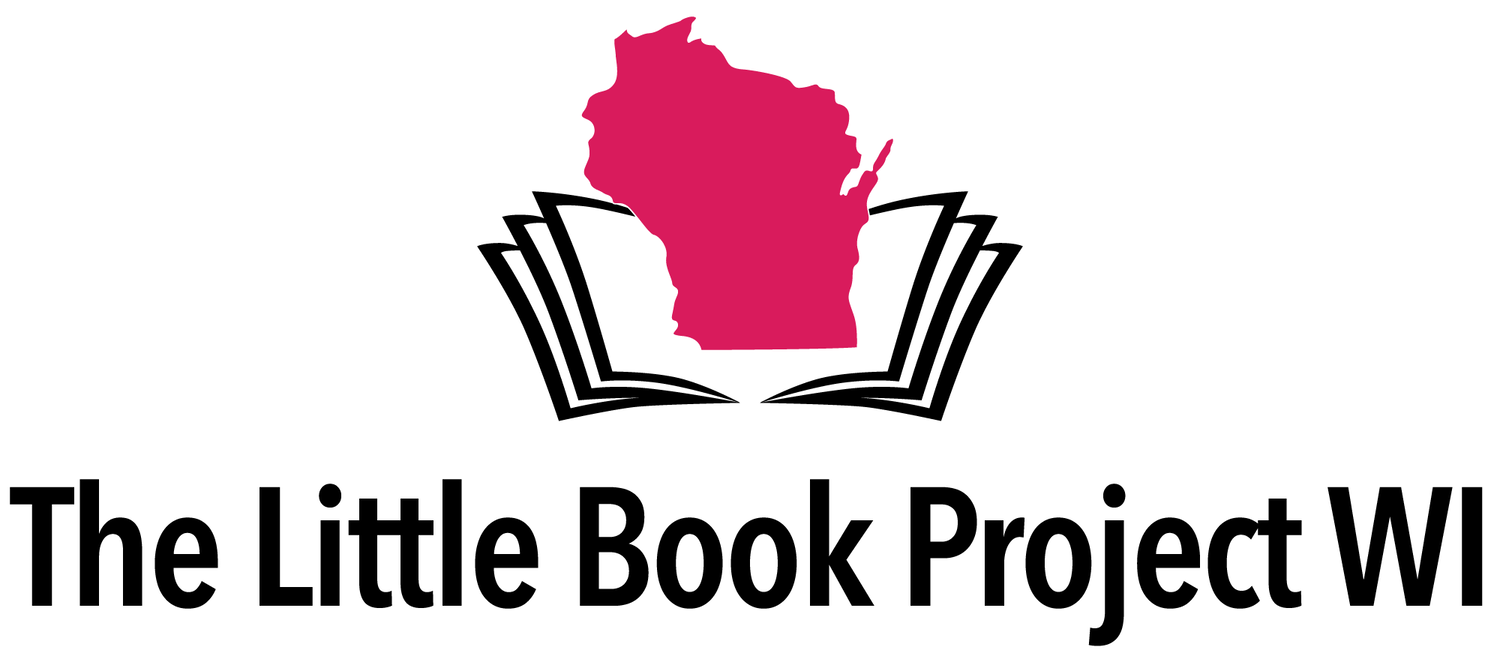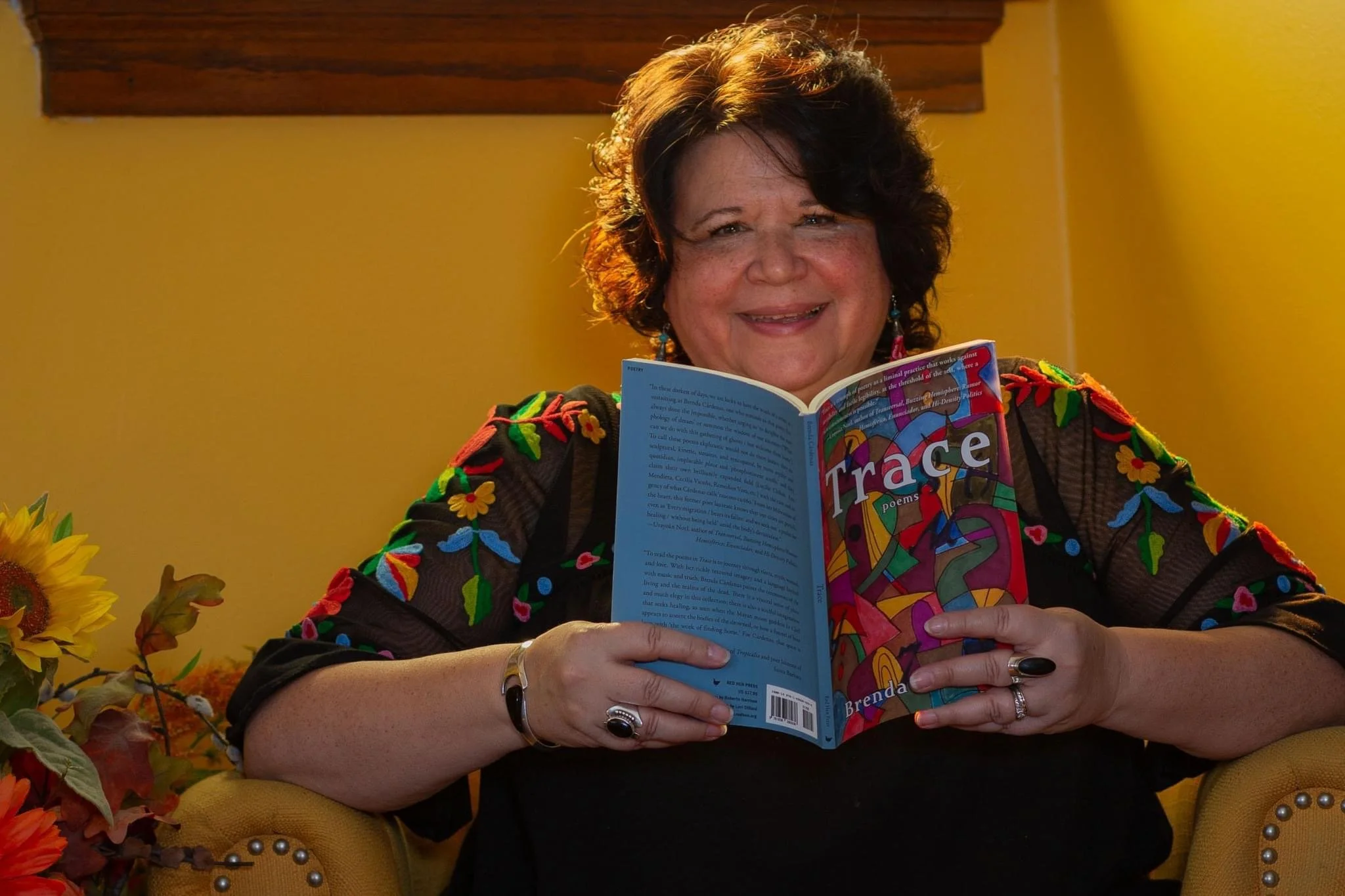Artist Profile: Brenda Cárdenas
Brenda Cárdenas has authored Trace (Red Hen Press), winner of the 2023 Society of Midland Authors Award for Poetry and silver winner of Foreword Review’s Indie Poetry Prize; Boomerang (Bilingual Press); and three chapbooks. She also co-edited Resist Much/Obey Little: Inaugural Poems to the Resistance and Between the Heart and the Land: Latina Poets in the Midwest. Her poems have been published widely in literary magazines and anthologies. Cárdenas has served as Milwaukee’s Poet Laureate and is Professor Emerita of English at University of Wisconsin-Milwaukee. You may find her at brendacardenas.net and on Instagram @brenda.cardenas.754.
Could you share one of your first formative experiences with poetry?
I think my very first formative experiences with poetry were actually listening as a teenager to the lyrics of exceptional songwriters like Neil Young, Leonard Cohen, Joni Mitchell and other folk musicians of the 1960s and 70s. I also encountered the poetry of Langston Hughes, Gwendolyn Brooks, Walt Whitman, William Carlos Williams, and Emily Dickinson in a high school literature class and fell in love with their poems musicality, imagery, and figurative language. But I encountered story long before poetry because one of my grandfathers, one of my grandmothers, and an auntie with whom I spent a lot of time were such great storytellers.
Brenda reading at Woodland Pattern
How have your influences changed — or stayed steady — from your early days of writing compared to today?
My poetry influences have broadened quite a bit since my early days of writing. Some very early influences included those poets mentioned above as well as other American poets like Frank O’Hara and James Schuyler, popular in the 1980s when I was an undergraduate, as well as Spanish language poets like Federico Garcia Lorca, Rosario Castellanos, and Pablo Neruda, and I certainly revisit all of these from time to time, especially Lorca who always feels timeless. But a little later, I came to know the work of many U.S. Latinae, Native American, and African American poets and became especially influenced by Lorna Dee Cervantes, Alurista (who gave me permission to write translingually), Joy Harjo, Lucille Clifton, June Jordan, and eventually Juan Felipe Herrera who remains one of my favorite poets to this day for a number of reasons. I appreciate the innovation, kinetic energy, translingualism, and communitarianism in his work. In fact, I admire the strong sense of community and social consciousness in all of these poets’ work, and I still read them.
That said, reading Juan Felipe Herrera led me to discover somewhat more experimental poets like Harryette Mullin, Cecilia Vicuña, Craig Santos Perez, Valerie Martinez, Carmen Gimenez, Claudia Rankine, Diana Khoi Nguyen, CD Wright, Brandon Som, and others who have become some of my favorites. My husband, the poet Roberto Harrison, also gravitates toward “experimental” (or avant garde) work, and he shared some of his favorites like Clark Coolidge and Jackson MacLow with me. I’ve also had the privilege of teaching some remarkable published poets who write in this vein when they were in graduate school: Siwar Masannat, Soham Patel, Beatrice Szymkowiak, and others. I was drawn to these poets’ innovative language and the way their work required my active participation as a reader. This influenced my writing process so that, while I would not call myself an “experimental poet,” I begin more often now with language (with a turn of phrase, for example, or a word bank) rather than with a subject or theme, so that the poem is not pre-determined, and I try to work more parataxis and surprises into my poems.
I also greatly admire the lyrical intensity, exquisite language, and social consciousness of poets like John Murillo, Eduardo Corral, Ae Hee Lee, Ross Gay, Ruth Ellen Kocher, Nicole Callihan, Tim Siebles, Tracy K. Smith, Ada Limon, Javier Zamora, Aracelis Girmay, Natalie Diaz, Ocean Vuong, Aimee Nezhukumatahil, Fady Joudah, Catherine Esposito Prescott, Robin Reagler, Frank Lima, and so many more, and I probably strive at least somewhat to write toward what they are doing while also remaining true to my own sensibilities, although I would never claim the amazing talent these poets have. I also hate these lists because I inevitably leave someone out; there are so many poets whose work I love. The short answer is that over the years my poetry horizons have greatly expanded. I read poets from very different schools and styles. When a poem is powerful—when it makes you catch your breath or laugh out loud or wander in its circuitous journey or be stunned by its verbal gymnastics—it’s powerful regardless of what “camp” it lands in.
How have community engagement and teaching influenced how you write and what you write about?
Community engagement has greatly influenced my work in many ways. Before moving back to Milwaukee in 2005, I lived in Chicago where I developed curriculum and taught for the youth initiatives of the National Museum of Mexican Art, which included an after-school multi-arts program and a youth-operated, bilingual radio station. These programs served primarily youth from the Pilsen and Little Village communities and was one of the most extraordinary opportunities I ever had both as a teacher and poet. For the multi-arts program, I worked with artists in the community to create multi-week workshops like Printmaking and Poetry Writing, Mask making and Storytelling, Muralism and Collaborative writing. Not only did the students’ talent and work influence me, but I also met many adult visual artists with whom I collaborated on ekphrastic and performance art projects. I also taught “Writing for the Radio” and brought students in both programs together for special projects like a spoken word and music CD. While in this position, I met musicians and sound producers and ended up pulling together a spoken word and music ensemble called Sonido Ink(quieto). We recorded our CD in that radio station during off hours. In the non-profit world, one wears many hats, so along with working for the youth initiatives, I also edited the Museum’s art catalogues and promotional materials it was publishing. I’m sure these experiences are one of the main reasons I’m still so keenly interested in visual art, music and inter-arts projects in general. Even my most recent book Trace has a number of ekphrastic poems in it, and through the years, I’ve collaborated with musicians, composers, and dance choreographers as well.
Recently the composer Daniel Afonso wrote choral music for my poem “Para los Tin-Tn-Teros,” and the piece was published by Hal Leonard Music and performed by the National Concert Choir at Carnegie Hall. Also, Starwound, a sophisti-pop trio based in Athens, Greece, created a song from my poem “Bucketsful,” which they will be performing in Milwaukee this October. I could have never imagined that my work at the Museum would lead to all of this, and I credit that experience for my sustained interest in inter-arts works.
I’ve long been an active community member, and more recently became a board member, of Woodland Pattern, a non-profit literary and arts center that we are so lucky to have in Milwaukee. I can’t even begin to count the many poets, authors, and other artists I’ve met through events at Woodland Pattern. I’ve also had the opportunity to curate events and to teach workshops through this organization. For example, I recently taught a workshop on the themes with which the musical group Starwound (mentioned above) works so that at their Milwaukee concert in October, they will improvise music behind the participants’ live reading of their poems.
I’ve also often collaborated with Letras Latinas, the literary initiative of the Institute for Latino Studies at the University of Notre Dame, on many projects. One of them was a master workshop in ekphrasis that I co-designed and co-taught with poet Valerie Martinez at the Smithsonian American Art Museum when they were exhibiting “Our America: The Latino Presence in American Art.” Both the workshop participants and instructors wrote poems in conversation with the art in that exhibit, and the poems were published in special folios in a number of literary magazines. As the exhibit traveled to other cities, other poets and writers adopted and adapted our curriculum to offer the workshop in their communities.
Finally, I just retired from 35 years of teaching, the last 17 or so at the University of Wisconsin-Milwaukee where I taught poetry writing and Latinx Literature classes. I’ve always viewed teaching and learning as a collaborative effort where my role is primarily that of facilitator. Students come to the class with their own talent, knowledge, and concerns from which I always learn as I try to help them express themselves artfully and inventively in language. Working to create community in the classroom is key. The whole process becomes one in which we are all learning, teaching, and encouraging one another. For example, when I give students a writing prompt or exercise, I always try to do it myself, to write along with them. Of course, this influences my own work. I was fortunate over my career to have taught many levels from seventh grade to doctoral students. My doctoral students often came into the program with books already written and even published. They were so incredibly talented and intelligent that teaching them demanded I constantly keep abreast of developments in the poetry world. They—and all my students over the years—have been such blessings.
What are 2 to 3 exhibitions, concerts, books and/or book talks, spoken word events and/or films you’re hoping to check out this season in Wisconsin or virtually?
I’m looking forward to Starwound’s performance of poetry and music at Woodland Pattern in Milwaukee on October 23 and a reading in celebration of the new Oxeye Reader at Carthage College in Kenosha on October 29 that I’ll be participating in along with Peter Burzynski, Bryon Cherry, Lewis Freedman, Annie Grizzle, Roberto Harrison, Mauricio Kilwein Guevara, Ae Hee Lee, Richard Meier, Sam Pekarske, and Antonio Vargas-Nieto.
On November 8, I’ll be participating in a Milwaukee reading with other poets for the Book Drop series curated and hosted by Angela Voras-Hills and Danielle Harms.



